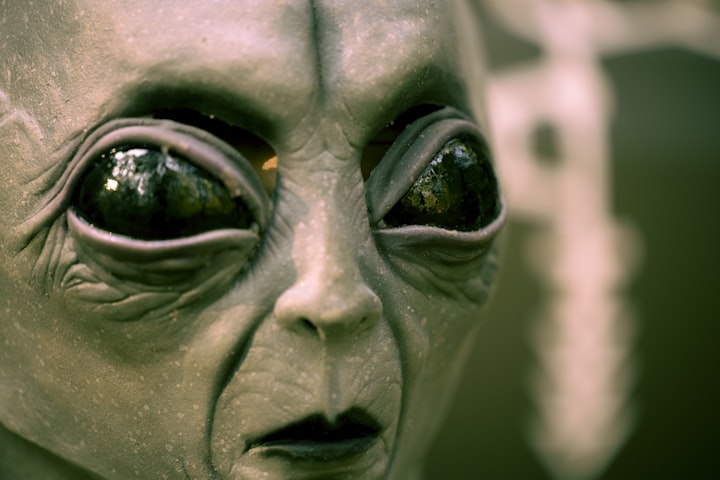
Black Holes
Black Holes: Unraveling the Mysteries of these Bizarre Cosmic Phenomena
Introduction: Captivating Beauty and Enigmatic Secrets of Black Holes
Black holes have always fascinated astronomers and enthusiasts alike. Their captivating nature lies in their extreme properties and the enigmatic mysteries surrounding them. As we delve deeper into their fascinating world, we discover something new and mind-boggling at every turn. In this article, we will embark on a comprehensive journey to understand the basics of black holes, their formation, and their eventual demise. Prepare yourself for an intriguing exploration into the heart of these cosmic marvels.
Uncovering the Invisible: The Concept of a Black Hole
At its core, a black hole is a region in space where gravity's pull is so overwhelmingly strong that anything unfortunate enough to cross its boundaries, known as the event horizon, cannot escape, including light itself. This makes black holes completely invisible to outside observers like us. But how do we know they exist? Although we cannot directly see black holes, they leave a trace of their existence through their impact on nearby matter and light. By observing the radiation emitted by superheated matter swirling around them, known as an accretion disc, we can infer the presence of these mysterious entities.
Einstein's Theory of General Relativity: The Key to Understanding Black Holes
To comprehend the extreme nature of black holes, we must turn to Albert Einstein's theory of general relativity. According to this theory, black holes warp space and time due to the immense mass they contain, compacted into an incredibly small space. The mass of a black hole determines the distance between its center and the event horizon, referred to as the Schwarzschild radius. As more matter falls into the black hole, the radius expands accordingly. It's important to note that everything in the universe, including ourselves, possesses a Schwarzschild radius, but only objects within that radius are devoured by a black hole.
A Feast for the Mind: Stellar Mass and Supermassive Black Holes
Black holes come in varying sizes, with two common types being stellar mass and supermassive black holes. Stellar mass black holes, ranging from three to dozens of times the mass of our sun, are most commonly found within galaxies. They form when a massive star, at least 20 times the mass of our sun, goes supernova, resulting in a core collapse below its Schwarzschild radius. Supermassive black holes, on the other hand, can reach hundreds of thousands to billions of solar masses and are believed to reside at the centers of large galaxies, including our own. The iconic image of a black hole captured by the Event Horizon Telescope depicts a supermassive black hole in the galaxy Messier 87.
The Missing Link: Intermediate-sized Black Holes
While stellar mass and supermassive black holes have been well-studied, the existence of intermediate-sized black holes has long been predicted. Recent observations have finally begun to provide evidence supporting their existence. Intermediate black holes fall within the size range between stellar and supermassive black holes, bridging the gap in our understanding. However, the exact mechanisms through which they form remain somewhat of a mystery. Scientists speculate that they may originate during the early stages of galaxy formation.
Speculative Possibilities: Smallest and Microscopic Black Holes
In the realm of speculative theories, scientists suggest the existence of black holes smaller than stellar masses and even on the subatomic scale. It is theorized that collisions inside particle accelerators could produce these miniature black holes. However, no concrete evidence has been found to support these ideas. It's important to remember that the mere presence of a black hole does not automatically make it a planet-devouring menace. Proximity is key, and microscopic black holes, due to their rapid decay through Hawking radiation, do not have sufficient time to grow to a dangerous size.
The Fading Glow: The Hawking Radiation and Black Hole Decay
Stephen Hawking's groundbreaking work introduced the concept of Hawking radiation, the predicted decay process of black holes. According to this theory, pairs of virtual particles constantly pop into existence in space's vacuum. Typically, these particles annihilate each other. However, if a pair forms near an event horizon, one particle may escape into space, while its partner falls into the black hole. This process gradually decreases the black hole's mass until it eventually dissipates entirely. Notably, the smaller the black hole, the faster its rate of decay. Hence, microscopic black holes have an incredibly short lifespan, ensuring they never pose a significant threat.
The Persistence of Titans: The Longevity of Supermassive Black Holes
While microscopic black holes diminish within an astoundingly short timeframe, supermassive black holes defy our concept of time. They will likely outlive the universe itself, persisting for orders of magnitude longer than the current age of the cosmos. Fortunately, the vast distances between these colossal entities and our humble existence ensure we will never come perilously close to them. Thus, the gradual decay of supermassive black holes poses no immediate danger.
Conclusion: Immersed in the Intricacies of Black Holes
In conclusion, black holes, with their extraordinary properties and mysteries, continue to amaze and confound us. From their invisible nature to the mind-bending dimensions they operate within, black holes are truly wonders of the cosmos. Stellar mass and supermassive black holes enchant us with their sheer power, while the exploration of intermediate-sized black holes opens up new avenues for scientific discovery. Despite the speculative possibilities of microscopic black holes, they remain harmless due to their rapid decay. Finally, the longevity of supermassive black holes ensures their presence long after our universe has faded away.
So, as we journey into the depths of our knowledge, we are left mesmerized by the captivating allure of black holes, forever yearning to unravel their secrets and expand our comprehension of the universe.





Comments
There are no comments for this story
Be the first to respond and start the conversation.